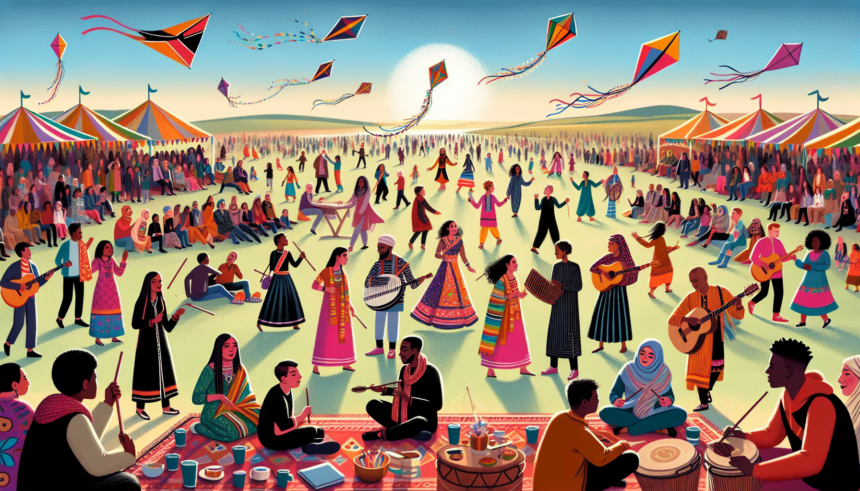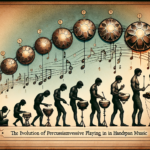Introduction
The Pan Tribe Gathering is an annual celebration of the rich and diverse cultural heritage of various indigenous communities. Held in various locations across the world, this event serves as a platform for tribes to showcase their traditions, art, music, and ways of life. Attendees get a firsthand experience of the vibrant cultures that might otherwise remain hidden from mainstream society. This year’s gathering, held at the lush, scenic grounds of the Green Valley, was no different. It was a tapestry of colors, sounds, and stories that spoke volumes about the resilience and beauty of indigenous cultures.
The Opening Ceremony
The event kicked off with a grand opening ceremony that left everyone in awe. As the sun dipped below the horizon, the stage came alive with a burst of colors and energy. Leaders from various tribes took to the platform, donning their traditional attires that ranged from intricate beadwork to vibrant feathered headdresses. The opening speech was delivered by Wesa, an elder from the Lakota tribe, who emphasized the significance of unity and cultural preservation.
A deeply moving invocation followed, where representatives from different tribes offered prayers in their native tongues. The air was thick with emotion as the rhythmic drumming and chanting resonated with the heartbeats of everyone present. This ceremonial initiation was not just a show; it was a call to honor and protect the ancestral legacies that have withstood the test of time.
Traditional Dances
One of the most anticipated segments of the Pan Tribe Gathering is the traditional dance performances. This year, the audience was treated to a slew of mesmerizing dances that told stories of love, war, harvest, and the natural world. The Zulu tribe’s “Indlamu” dance stood out with its high-energy kicks and vibrant costumes. The dance, usually performed during celebrations, was an electrifying display of agility and synchronicity.
The Maori tribe from New Zealand brought their famous “Haka” to the stage. Known for its powerful postures, rhythmic chants, and fierce expressions, the Haka dance was both intimidating and awe-inspiring. It was a testament to the warrior spirit and the unity of the Maori people. Equally captivating were the performances by the Navajo tribe, who danced in fluid movements that mirrored the flow of the wind and water.
Craftsmanship and Artisanal Wonders
Strolling through the artisan stalls was like wandering through a living museum. Craftsmen and women from various tribes showcased their masterful works, each piece echoing the heritage and traditions of their creators. Visitors marveled at the stunning beadwork of the Maasai, known for their vibrant necklaces and bracelets. The intricate carvings of the Inuit, which often depicted animals and ancestral spirits, drew significant admiration for their attention to detail.
Pots and textiles from the Ashanti tribe were highlights, with their bold patterns and rich colors. Each artifact had a story to tell, and artisans were more than willing to share the histories and techniques behind their creations. This section also featured live demonstrations, where attendees could watch and learn the skills of traditional weaving, pottery, and carving. It was an interactive experience that bridged the gap between observer and creator, allowing a deeper appreciation for the time-honored crafts.
Indigenous Cuisine
No cultural gathering is complete without food, and the Pan Tribe Gathering was a culinary journey like no other. The food stalls offered authentic dishes from various tribes, allowing attendees to savor flavors from around the world. The aroma of freshly cooked maize, grilled fish, and native herbs hung in the air, drawing curious foodies to sample these traditional delights.
The Ainu tribe from Japan served up their “Ohaw” soup, a hearty broth made with salmon and local vegetables. Another favorite was the “Bannock” bread from various Native American tribes, crispy on the outside and soft within. The richness of the Ethiopian “Doro Wat” (spicy chicken stew) and the sweetness of the Brazilian “Acai” berries were other highlights that left a lasting impression on the taste buds.
Music and Storytelling
Music and storytelling played crucial roles in weaving the cultural tapestry of the Pan Tribe Gathering. The main stage hosted an array of performances that filled the air with melodies and narratives passed down through generations. The hauntingly beautiful throat singing of the Tuvan tribe and the soulful tunes of the Andean pan flute transported listeners to distant lands and ancient times.
A special storytelling tent proved to be a sanctuary of wisdom and knowledge. Elders and storytellers from various tribes regaled the audience with myths, legends, and folktales, each one rich with moral lessons and cultural insights. From the trickster tales of Anansi the Spider to the creation myths of the Hopi tribe, every story was a thread in the expansive fabric of human experience and imagination.
Workshops and Interactive Sessions
This year, the organizers introduced a series of workshops and interactive sessions aimed at fostering a deeper understanding of indigenous practices and philosophies. These sessions covered a range of topics, from traditional medicine and sustainable living to art therapy and spiritual rituals.
One memorable workshop was led by tribal herbalists who explained the medicinal properties of various plants and demonstrated how to prepare herbal remedies. Another session focused on traditional music instruments, with participants getting the opportunity to learn how to play the djembe drum or the didgeridoo.
Interactive storytelling circles allowed participants to engage directly with storytellers, asking questions and sharing their interpretations. These workshops were a valuable addition to the gathering, enhancing the educational aspect and encouraging cultural exchange and mutual learning.
The Closing Ceremony
The Pan Tribe Gathering concluded with a heartwarming closing ceremony that encapsulated the spirit of the event. Representatives from each tribe came together on stage, forming a circle that symbolized unity and solidarity. They shared final blessings and expressions of gratitude for the shared experience and the bonds formed over the course of the gathering.
A grand finale of traditional dances and a communal song brought the gathering to an emotional close. The echo of the drumming and the harmony of voices lingered long after the event ended, a reminder of the enduring power of cultural heritage and the importance of coming together to celebrate it.





